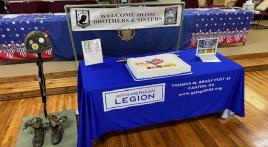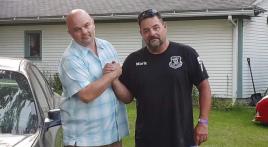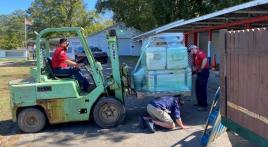When Navy SEALs took down Osama bin Laden, Ernest G. Sealo, a former servicemember in the Army was reminded of his time as a substitute Navy Frogman, which the SEALs descend from.
Near the end of World War II, Sealo was a soldier stationed in Calcutta, when India was still under British domination. There, a monthly newspaper announced a swimming competition. It would be in Agra, near the Taj Mahal. As a former member of the Harlem YMCA and his high school swim team, Sealo decided to participate.
Little did he know, the skill he had honed since childhood would give him opportunities to see the world.
The 50-yard freestyle event was competitive — a fast field of some of the best swimmers in the China-Burma-India theater. Sealo placed second, and was awarded a trophy by Major Frank D. Merrill, of the Merrill Marauders.
That night Sealo saw the Taj Mahal lit entirely by electric light from the U.S. Signal Corps. He was in awe.
“We walked through the mausoleum and you had to take your shoes off to walk through. It was a beautiful, beautiful place.”
He returned to Calcutta and soon found another chance to use his swimming talent. Because he had done well in the race, Sealo was asked to join a lifeguard group for a new United Services pool they were opening in Calcutta.
While integration was still rare in the military and a hot topic back at home in the United States, Sealo, then classified as “Negro,” had been segregated. When he joined the 21st Special Service Company of Base Section 2 in 1945, he, along with two other men, integrated it. He said he had no problems or adverse interactions during this process.
Rather, it was the job itself that required intense focus and concentration. The new squad had some big names within the ranks, including the commanding officer, movie actor Melvyn Douglas, as well as Urho Saari, who would go on to coach the U.S. Olympic water polo team.
“It was tough,” Sealo laughed. “It’s not too easy when you have to save people’s lives — that’s what we had to do. But it was more than just being a lifeguard, it was socializing and building morale.”
Several of the men in the group were from California, and liked to play water polo. In a morale-boosting effort, the team learned to play the sport. Sealo was the center-forward and found he was a natural.
“I had played basketball and I was a good swimmer,” he said. “My job was just to get up there and flip the ball back and try to score. I made out very well.”
The team also made out well, too, winning an international tournament, which may have drawn them some extra military attention.
A Naval officer reached out to the group to take part in an operation to interrupt Japanese suppliers in Burma. Such an operation would usually require the work of the Navy’s Frogmen, but there wasn’t a naval unit nearby. He requested Sealo’s squad sub as Frogmen.
“An elite group of swimmers throughout the theater — since we were part of that group, they thought that we could handle the water pretty well.”
They trained between lifeguarding, teaching swim classes, and water polo practice. But training for this was unlike his original training as a swimmer, which had been competitive — diving, turning, and going as fast as he could.
“But if you are a Frogmen, you have to be able to stay in the water, tread the water — it’s not how fast you can go,” he said. “It’s enduring the water. It’s more than we had been doing at the time before the war.”
At the time, he remembers being eager to have a chance at combat.
However, combat wouldn’t come for this group. The war ended and the substitute Frogmen went back to their regular duties. They returned to their posts as morale-boosters, setting servicemembers and nurses at ease, working under the shade of umbrellas by the pool.
Sealo was discharged in 1946, and returned to New York City. Before enlisting, he had been in the middle of earning his college degree. Upon returning, he utilized the GI Bill to earn three degrees in physical therapy from Columbia University, and went on to treat fellow veterans at the New York VA Hospital.
“We had a lot of the kids coming back from the Vietnam and older guys from World War II. I heard a million horror stories, war stories.”
Outside of his career, he found a home in Puerto Rico, which he still is able to return to four months a year. He likes to spend his time there golfing and taking in the beach. He is 92 years old.




